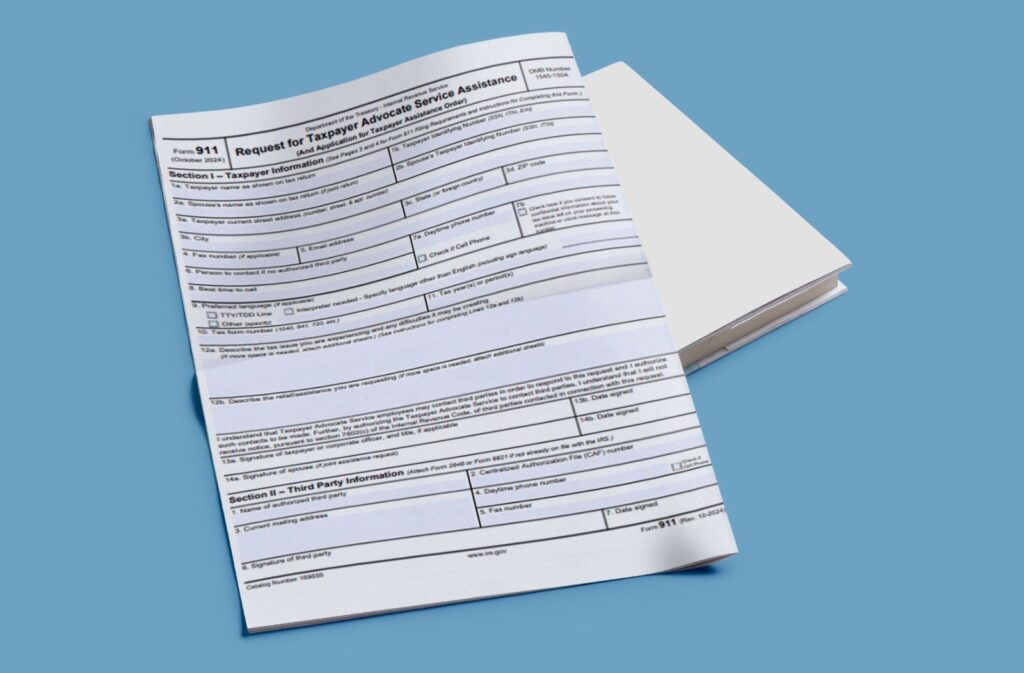If you’re facing unresolved tax issues or experiencing delays from the IRS that are impacting your finances, IRS Form 911 can help. This form allows taxpayers to request assistance from the Taxpayer Advocate Service (TAS), an independent division within the IRS designed to help resolve problems when standard procedures fall short. At Mayatax, our team offers expert income tax services to guide you through the process of filing Form 911, ensuring that you receive the support you need in a timely manner.
What Is a 911 Form?
IRS Form 911—also referred to as the Taxpayer Advocate Form—is used to request help from the Taxpayer Advocate Service when you’re facing significant hardship or can’t get the IRS to respond. The TAS acts independently from other IRS departments and steps in when the normal process has failed. This form is a powerful tool if you’re being ignored, unfairly penalized, or if an IRS action is causing you undue stress.
When Should You File IRS Form 911?
Not every IRS delay warrants filing Form 911, but there are clear situations where it’s appropriate. You should consider using this form if:
- The IRS’s actions—like levies, wage garnishments, or asset seizures—are causing you financial hardship.
- Your attempts to resolve the issue through standard channels haven’t worked.
- The IRS is unreasonably delaying your case (typically more than 30 days past their normal response time).
- You believe a system or procedural error at the IRS is negatively impacting you.
Both individuals and businesses can use Form 911 to request intervention from TAS. Even your authorized representative—such as a CPA or tax attorney—can submit the form on your behalf.
Form 911 Instructions: How to Fill It Out
Submitting IRS Form 911, Request for Taxpayer Advocate Service Assistance, requires careful attention to detail. Here’s what to include based on the form and its official guidance:
1. Taxpayer Information
Provide your full name as shown on the tax return, your Taxpayer Identification Number (SSN, ITIN, or EIN), mailing address, and contact details such as phone number, fax number (if applicable), and email address.
If you’re filing jointly, include your spouse’s name and identification number as well. You may also specify a contact person if you’re not using a third-party representative.
2. Third-Party Representative
If someone else is submitting the request on your behalf, fill in their name, mailing address, phone and fax numbers, and include their signature and date. Also, attach Form 2848 (Power of Attorney) or Form 8821 (Tax Information Authorization), if not already on file with the IRS.
3. Tax Details
Specify the federal tax form involved (e.g., 1040, 941, etc.) and the relevant tax year or period. These should correspond to the issue for which you’re requesting assistance.
4. Description of the Issue
Clearly explain the tax issue you’re facing, including any IRS actions or inactions that have contributed to the problem. If applicable, note when you first contacted the IRS. Describe the impact of the issue—such as financial hardship, delays, or failure to respond.
5. Requested Resolution
State what type of assistance or resolution you’re seeking from the Taxpayer Advocate Service (TAS). Provide any relevant documentation that supports your request to help the Advocate understand and resolve the matter efficiently.
6. Signature and Date
You (or your authorized representative) must sign and date the form. If it’s a joint request, both spouses must sign. For business filings, a corporate officer must sign and include their title.
Where Do I Send IRS Form 911?
The fastest way to submit IRS Form 911 is by fax. Each state, along with the District of Columbia and Puerto Rico, has at least one Taxpayer Advocate Service (TAS) office. To send your form, fax it to the TAS office that covers your area. You can find the fax number on the IRS website at Taxpayer Advocate Service Contact or in your local phone directory.
Alternatively, you can mail the form to your local TAS office. The mailing address and phone number for your office can also be found on the IRS website or in your local phone directory. If faxing, be sure to keep the confirmation for your records.
Why This Taxpayer Advocate Form Is So Important
Form 911 isn’t just a way to complain—it’s a formal request for help that bypasses the usual red tape. Once accepted, the TAS assigns you a case advocate who directly works to resolve your issue. This can be especially helpful when normal IRS systems fail, or you’re facing economic harm due to incorrect penalties, levies, refund delays, or poor communication. The TAS has real authority to escalate and correct cases, especially when IRS procedures have broken down.
Step Toward IRS Relief with Form 911
Tax stress doesn’t have to drag on. If the IRS has failed to resolve your issue or taken action that’s hurting you financially, Mayatax can step in to help. Our experienced team understands the urgency of these cases and can help you accurately complete Form 911 and submit it to the right TAS office. We’ll make sure your voice is heard—and help ensure your rights as a taxpayer are respected.
When you’re feeling ignored or overwhelmed by the IRS, don’t go it alone. Mayatax offers personalized guidance to help you take control and move toward resolution.

